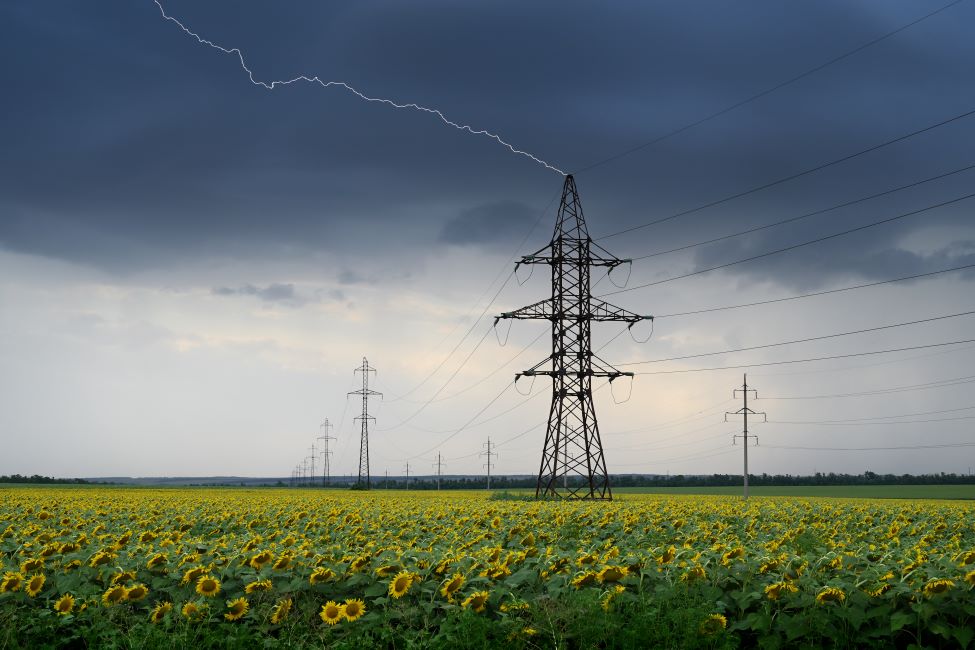A single lightning strike can release a 30 million-volt surge, enough to severely injure or kill a person in an instant. Every second, the unbelievably powerful force of electricity jumps back and forth between clouds and the ground in a huge explosion of light and rumbling thunder. While many people who play the game think getting hit is purely random, having a grasp of the dangers can guide you in protecting yourself. In storms, preparation is everything, and first aid training at Hobart by Give first can greatly increase your chances of survival. I remember one summer hike where I was caught unaware when a storm rolled in, the atmosphere crackling as if it were loaded with voltage and discovering a shelter racked against the storm became a matter of urgency. If you want to know how to react under certain circumstances, taking a first aid course at Launceston with give first aid will equip you the vital and life-saving techniques to be able to act swiftly when this happens.
The jolt of electricity from a lightning strike is extreme. It can transit through the body, making burns, nerve damage and even cardiac arrest possible. Because electricity prefers the path of least resistance, metal objects such as power lines and fences are primary targets. If you come in contact with them in a storm the risk is very extreme. Whether in the workplace or outdoors, responding correctly can save lives. While this training equips you to handle lightning strikes directly, you can also learn how to treat secondary injuries, such as burns or someone going into shock. Although few people may think about it, lightning strikes are more frequent than people imagine and knowing how to be prepared can dramatically lower the chances of being a casualty.
The Science Behind Lightning
Lightning is a remarkable phenomenon of nature that occurs during storms due to the buildup of an electrical charge in storm clouds. The negative charge in the clouds attracts a positive charge from the ground causing a rapid discharge of electricity. This creates a gigantic bolt of power, which can be a few kilometers long and has about 30 million volts. The quick heating of this air causes sound waves, or in other words, creates a sonic boom in the form of thunder.
Not all lightning actually strikes the ground: some is simply exchanged between clouds, and others hit trees, fences, or piping systems, causing dangerous side splashes. Positive lightning, which is rarer, packs a tremendously more powerful punch, and can cause burns, cardiac arrest or death when it hits directly.
Why Lightning Strikes Objects and Humans
And a lightning strike takes the path of least resistance to the ground. Air, being a poor conductor, makes the electricity seek a shortcut through something metal, through trees, even people.” That’s why levels like radio towers and buildings with lightning rods Get Hit A Lot. The Empire State Building alone is hit by lightning at least 25 times a year.
This means that a person outside in a clear area is a potential target, because the human body is a surprisingly good electrical conductor. When a person stands at 170cm tall, it can provide a direct route to the floor for electricity to follow. That is why knowing what makes lightning tick is an important part of keeping safe during a storm.
How to Get a Better Sense of Your Chances of Being Hit by Lightning
Although an estimated 240,000 people are struck by lightning every year, the odds of being hit by lightning are low — about 4 in a million in places like Australia. Still, there are factors that can relate to your vicinity of being up hit: If you happen to be caught in a thunderstorm with visible lightning and thunder. The highest point is the favorite target for lightning, and standing in the open, particularly in a field, adds to your chance of experiencing danger. Contact with metal fences or wet conditions, such as soaking rain, also increases your risks. All of which is a reminder to properly shelter in place during a storm, avoid tall objects, don’t run plumbing or electrical systems (both can carry electric current), turn off metal piping, and stay off the phone. Lightning does not necessarily follow the usual tropes of stormy weather as a bolt from the blue, which can happen far from an approaching storm, and without indication or warning, is still possible. And staying up to date from trusted sources like the National Weather Service is key to decreasing the risk.
What to Do to Avoid Getting Struck By the Lightning?
- Lightning will strike during a thunderstorm.
- Stay in a hall building.
- Electrical devices, showers and plumbing conduct electricity, so avoid them.
- Unplug valuable appliances.
- Vehicles provide safety. The metal chassis serves as a Faraday cage and keeps you safe from electricity.
- If a car is struck by lightning, do not get out. Wait for help.
- Don’t be at the highest point outside.
- Avoid trees, metal fences and powerlines. Lightning can strike close-by objects.
- Trees can explode due to the quick vaporisation of tree sap when lightning strikes.
Surviving a Lightning Strike
- Although 90% of the people who strike lightning survive, they can also be burned and get cardiac arrest.
- Lightning can injure internal organs, muscles, bones and the brain.
- It can produce seizures, unconsciousness and temporary paralysis.
- Collaterals such as secondary injuries from shrapnel after trees explode or fires might also occur.
The First Aids of Lightning Strikes
Immediate first aid is essential if someone is hit by lightning. Those with a qualification in first aid can also provide life-saving assistance, starting with CPR if the individual is unconscious or lacking a pulse. Because lightning can lead to cardiac arrest, prompt action is critical for restarting the heart and restoring normal breathing. Treat burns from the strike or secondary injuries like exploding trees, and try to keep the person warm and as calm as possible until professional help arrives. If the patient is conscious, first aid recipients can also monitor for changes in vital signs and provide a sense of calm, which can help mitigate the risk of shock. As such, prompt and proper first aid treatment can help save lives and reduce long-term injury due to lightning strikes.
So if you wish to be first aid qualified, why not sign up to a First Aid course in Launceston or Hobart with Give First Aid. They have a hands-on training that gives you the skills necessary to help with emergencies such as lightning strikes and a number of other medical emergencies with the confidence.





























